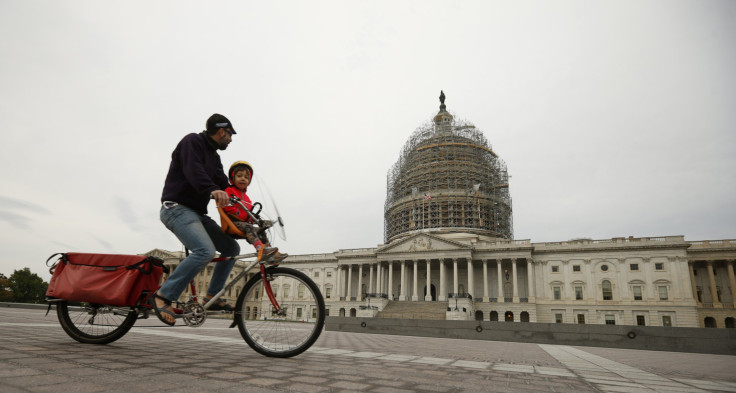Pew Survey Reveals American Voters Sharply Divided By Age, Race And Gender

A new study from the Pew Research Center, published on Tuesday, explores gender, class, and religious differences behind party affiliation in the U.S., as candidates begin to prepare for the 2016 presidential elections. The survey shows that 32 percent of those polled identify as Democrats and 23 percent as Republicans.
A major demographic shift toward the Republican Party came from the so-called “Silent Generation,” defined as those between the age of 69 and 86. In 1992, the group was solidly Democratic with 52 percent affiliated with or leaning toward the Democratic Party while 38 percent favored the GOP. In 2014, the Republicans led in that group, with 47 percent leaning toward them versus 43 percent for the Democrats.
Among those who identify with or lean toward the Republican Party, 90 percent are white. White, evangelical Protestants in particular make up over one-third of GOP supporters. Democrats rely heavily on minorities, especially blacks and Asians, and those without religious affiliations.
White Millennials are about equally divided with 45 percent identifying or leaning toward Republican, compared to 43 percent affiliated or leaning toward the Democrats. Among non-whites, all generations strongly lean toward Democrats.
Women lean solidly toward Democrats by 52 percent against 36 percent who favored the Republicans. This difference was present across all subgroups, but was most pronounced among women who held advanced degrees or were unmarried.
However, both parties were eclipsed by the rising share of voters who do not identify with either party. Overall, 39 percent of American voters consider themselves independent -- the highest proportion in over 75 years, beating both self-identified Democrats and Republicans. The rising number of unaffiliated voters grew sharply since 2004, and has cut mainly into self-identified Republicans, who have fallen by 6 percent over the last decade.
However, the number of self-identified independents belies their actual voting behavior. While more people are unwilling to identify with either of the major parties, their actual voting behavior is becoming more predictable, according to the Washington Post. A 2012 poll conducted by ABC and the Post showed that just 6 percent of Americans said there was a “good chance” they would change their mind about their presidential candidate of choice in 2012, compared to 10 percent in 2008 and 12 percent in 2004.
The Pew foundation also explained that “in many respects, those who lean toward the parties—even if they identify as independent—have attitudes and behaviors that are very similar to those of partisans.”
Another study from Pew last year showed that American voters are becoming increasingly polarized along party lines. The number of Americans who expressed consistently conservative or liberal opinions doubled to 21 percent over the past two decades, resulting in shrinking ideological overlap. This has also resulted in a growing number of voters regarding the opposing party as “so misguided that they threaten the nation’s well-being.”
The new study drew upon over 25,000 interviews conducted in 2014.
© Copyright IBTimes 2024. All rights reserved.











